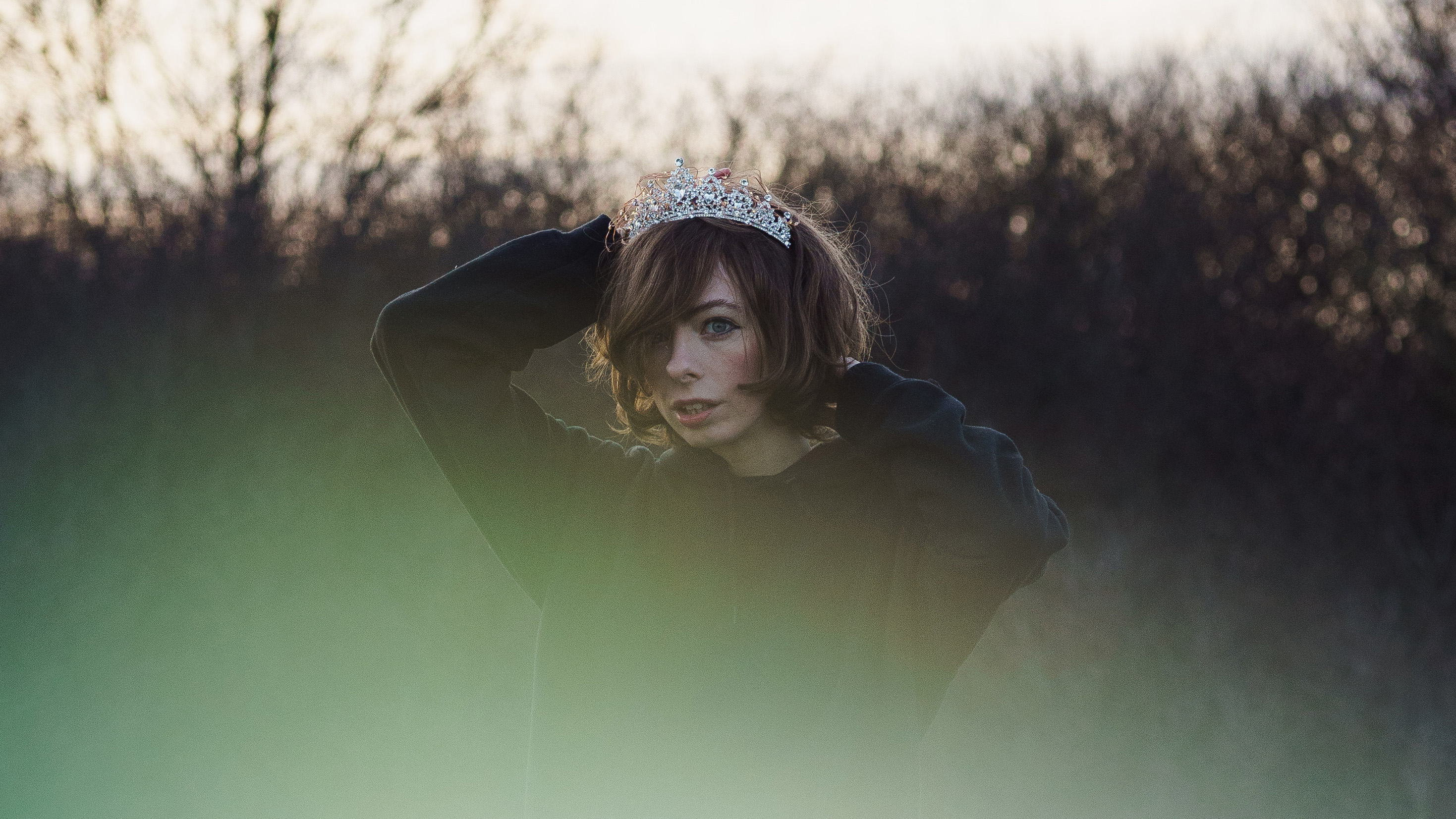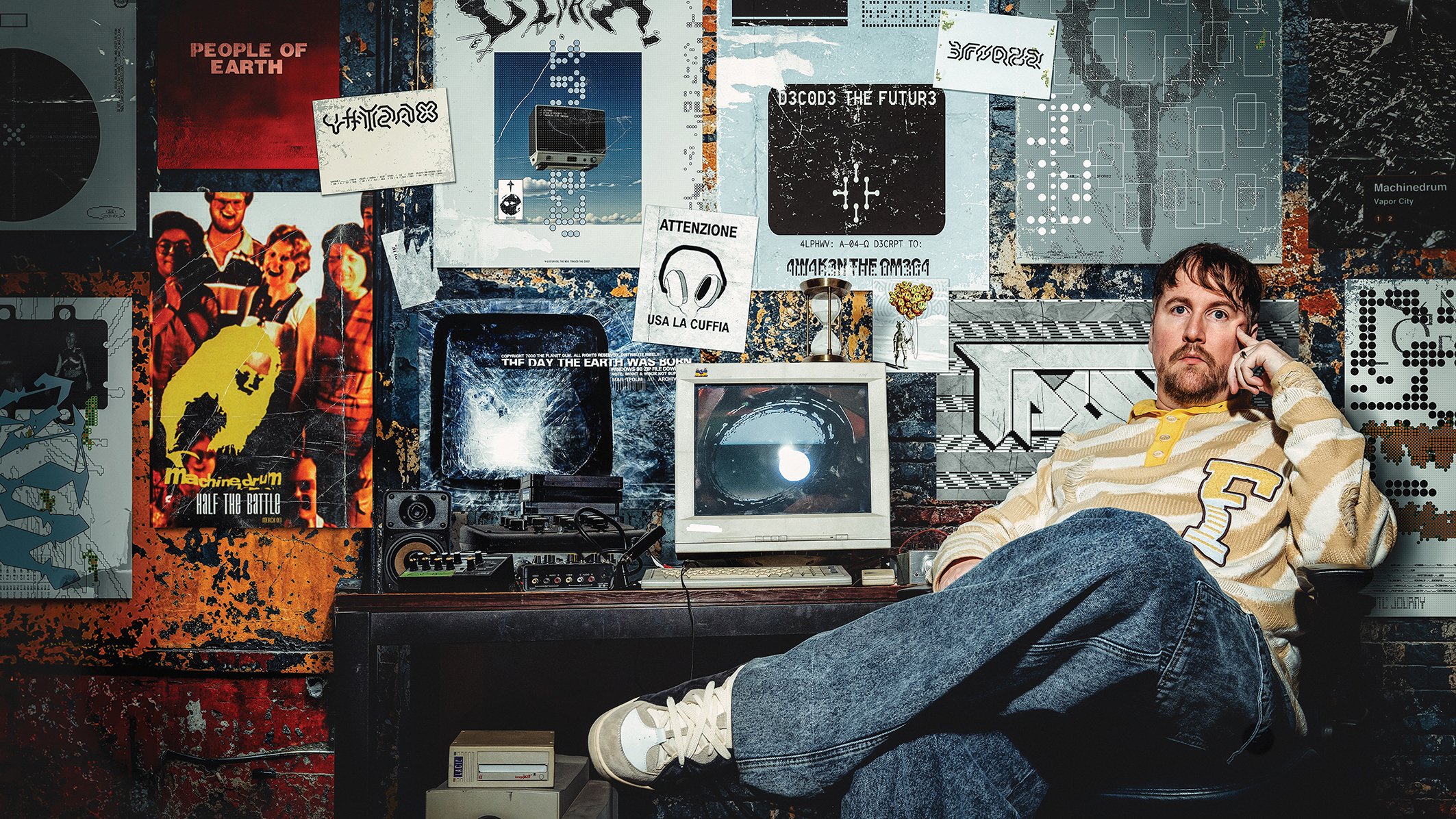
American electronic producer Travis Stewart’s Machinedrum alias has been pushing the boundaries of drum & bass for over 20 years, incorporating elements of glitch-hop, IDM, house, dubstep, jungle and juke, while still finding room for collaboration on dual projects such as J-E-T-S, Sepalcure and Dream Continuum. In addition, the versatile Stewart has recently dipped his toe into film and TV scoring with credits including the acclaimed German crime drama, Das Geheimnis Des Totenwaldes (2020).
Following a four-year hiatus as Machinedrum, Stewart decided to spend his 41st birthday at Joshua Tree National Park. Seeking clarity and inspiration, and armed with a collection of old hard drives, Stewart reemployed defunct ’90s music sequencer Impulse Tracker to create a dedicated sound library featuring long-lost material from his teenage years. Creating a self-enforced rule set alongside an eclectic range of vocal collaborators, Machinedrum’s latest sonic tapestry, 3FOR82, threads a needle between his past, present and future self.
You’re about to release your 11th album. How does it feel to have a career that possesses such longevity?
“It’s an interesting question. There have been times when I’ve wondered how long I can keep this going, but overall there was a point when I realised that the path I was taking was focused more on longevity than overnight success. A lot of the creative decisions I’ve made have leaned towards the former, especially given the risk of generally not doing what some other artists do, which is to find and then stick to one sound so as not to alienate their fans.
“I tend to make music I would want to hear my favourite artists make, and I want to see them continue to grow, evolve and surprise rather than give me something expected or predictable.”
Was there a release that signified a point in time where you thought, great, making music can be a career for the rest of my life?
“The decision to be a career musician was all or nothing from an early age, but things started clicking for me when I moved to New York and released what was at the time my most future-heavy album Want To 1 2. I was working with all these different vocalists and seeing new paths open up from that. At that point, I finally understood what it meant to be a music producer rather than an electronic music creator – everything had become weightier than just releasing some instrumental tracks of me fucking around.”
When did you start thinking about making the latest album 3FOR82, and what thoughts were circulating in your head in terms of what you wanted it to be?
“I’d already planned on setting aside some time between March and June of 2023 to write an album, but once March rolled around I thought, ‘oh shit, we’re here’ [laughs], so I decided to go out to Joshua Tree for my birthday because I’d previously had a real urge to start some sort of creative project out there.
“Every time I’d been there I felt that ideas were coming to me and there’s something magical about the place. It’s vast, the horizons are so distant and you usually can’t even see your neighbour’s house because everything’s so spread out. There’s a certain clarity that comes with feeling that you’re on your own little planet and I wanted to tap into that, but I had no idea what kind of album I wanted to write.”
When you say ‘start a project’, are you talking about formulating ideas in your mind or going further and using some gear to sketch a few tracks?
“It was a bit of both. I’d looked at tons of vacation rental options and landed on one that jumped out to me because there was no art on the walls, very minimal design and tons of windows so I could be connected to being out in the desert with really beautiful views. The other side was a need to bring a small setup so if anything did strike me I could at least start sketching a song idea. I basically set up a desk in the living room with my computer, monitors and a tiny little Akai LPK25 keyboard.”
When you have ideas for a project, do they tend to come out as originally defined or take unexpected detours?
“Only two albums of mine have had an intentional vision, Human Energy and 3FOR82. For all of my other albums, if there was a concept it revealed itself as I was making the tracks, but for these two the vision was fully realised and a big part of that was about creating a strict, rule-based framework that applied to their creation. Having that in place helped enforce the vision.”
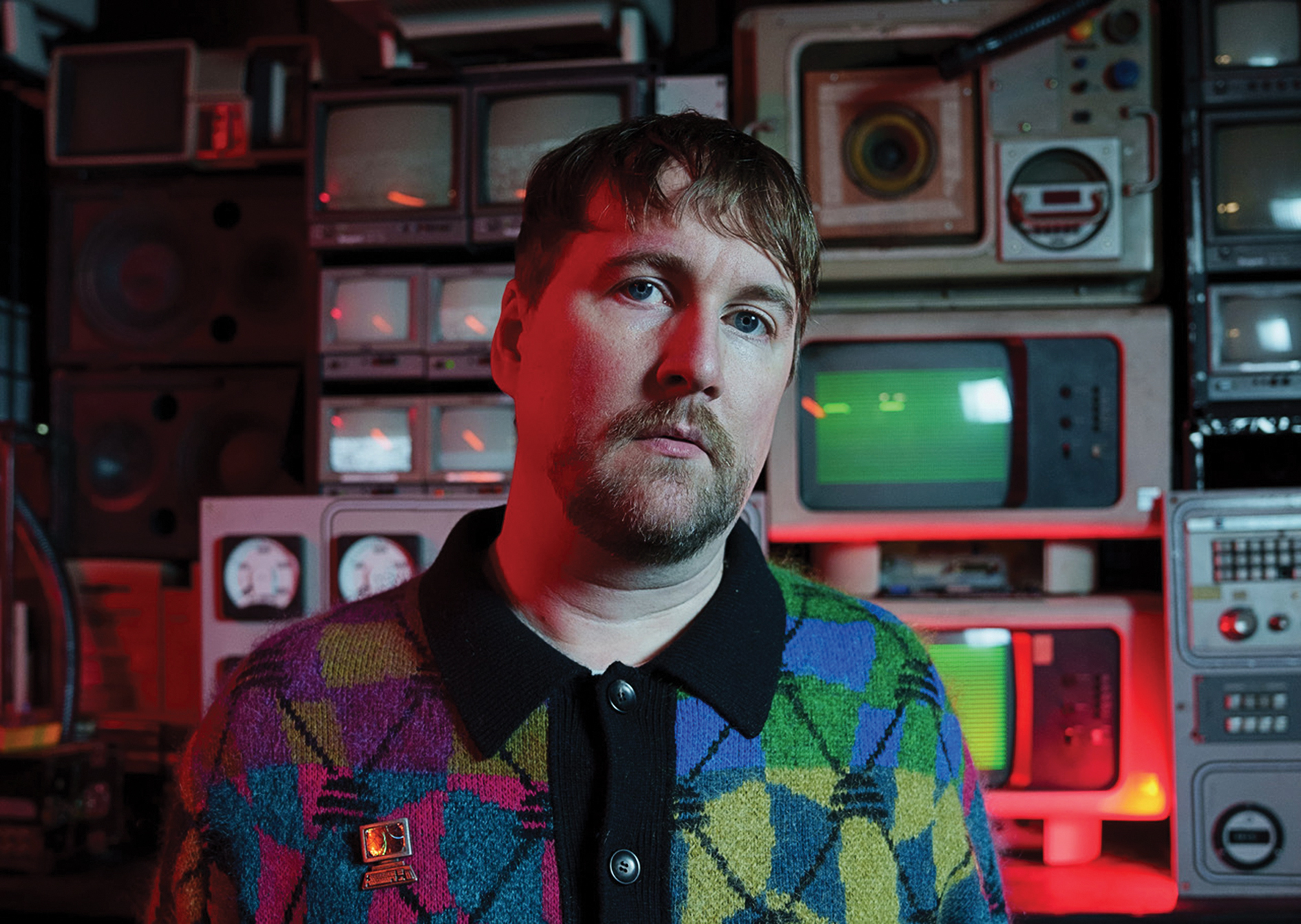
We read that 3FOR82 encompasses Machinedrum’s past, present and future. Can you explain what that means to you?
“I don’t know what prompted me to do it, but I decided to bring these really old hard drives that I’d recently rescued for some totally different projects and as I was setting up my makeshift studio my first impulse was to wonder what was on these things. The sun was going down and I didn’t want to put pressure on myself to make something on the first night, so I thought I’d start off easy and have fun exploring these drives.
“As I was doing that, I was coming across sessions from when I was a teenager and realised that there were so many early songs that I’d forgotten about. Some information started to come back to me, but I realised that these were ideas that I never knew what to do with – I’d just been stuck with the original intention of the songs. Having that time separation, I could suddenly see the good ideas and wondered what it would be like to scrap all the other stuff and make new versions of those songs.
“That same thought kept coming to me as I was going through all of these old sessions, so I decided to spend the entire night making a small sound library and as I kept discovering more and more gems, that late night turned into an entire week of just doing that. From that point, I knew that reconnecting to my past and essentially collaborating with my younger self was what the new album was going to be, taking these songs across the finish line 25 years later.”
When I first started making music I was very influenced by UK rave and electronic music culture, but being a teenager in the middle of nowhere in North Carolina that was from a very distant point of view
There’s obviously a nostalgic element to this album – a nod to rave culture, perhaps?
“When I first started making music I was very influenced by UK rave and electronic music culture, but being a teenager in the middle of nowhere in North Carolina that was from a very distant point of view. There was some form of rave culture here that I absolutely despised because I wasn’t into what North Carolina considered to be rave, but a detached approach to rave still seemed to exist in my musical DNA.
“I basically matched that DNA with everything I’ve learned from living and travelling all over the world experiencing rave, festival and even hip-hop culture, filtered through my youthful, naïve idea of what I thought all of that represented.”
In looking back, was there also an element of putting yourself in a headspace where you were freer in terms of reliving a time when you didn’t have the pressure of sustaining a career or the responsibilities of adulthood?
“The more I’ve thought about this, I’ve come to a realisation that there were definitely anxieties and pressures at that time, but they’re completely different to the ones I have now. Yes, there was a freeness and lack of a jaded point of view; I was excited about what was going on around me and that acted as a sponge, but at the same time I was staring into the unknown and that seemed scary to me. Deciding to be a niche electronic music artist in the ’90s and early ’00s was so against what anybody I knew growing up was doing and was a huge risk.
“My parents were very supportive but would also be very real in terms of asking how I could turn this into a career that has longevity, and I didn’t know. Over time, the unknown starts to peel its layers, and while I still feel the pressure of meeting the expectation of my fans, how I get my music heard or how I can outdo myself, embracing that has become easier.”
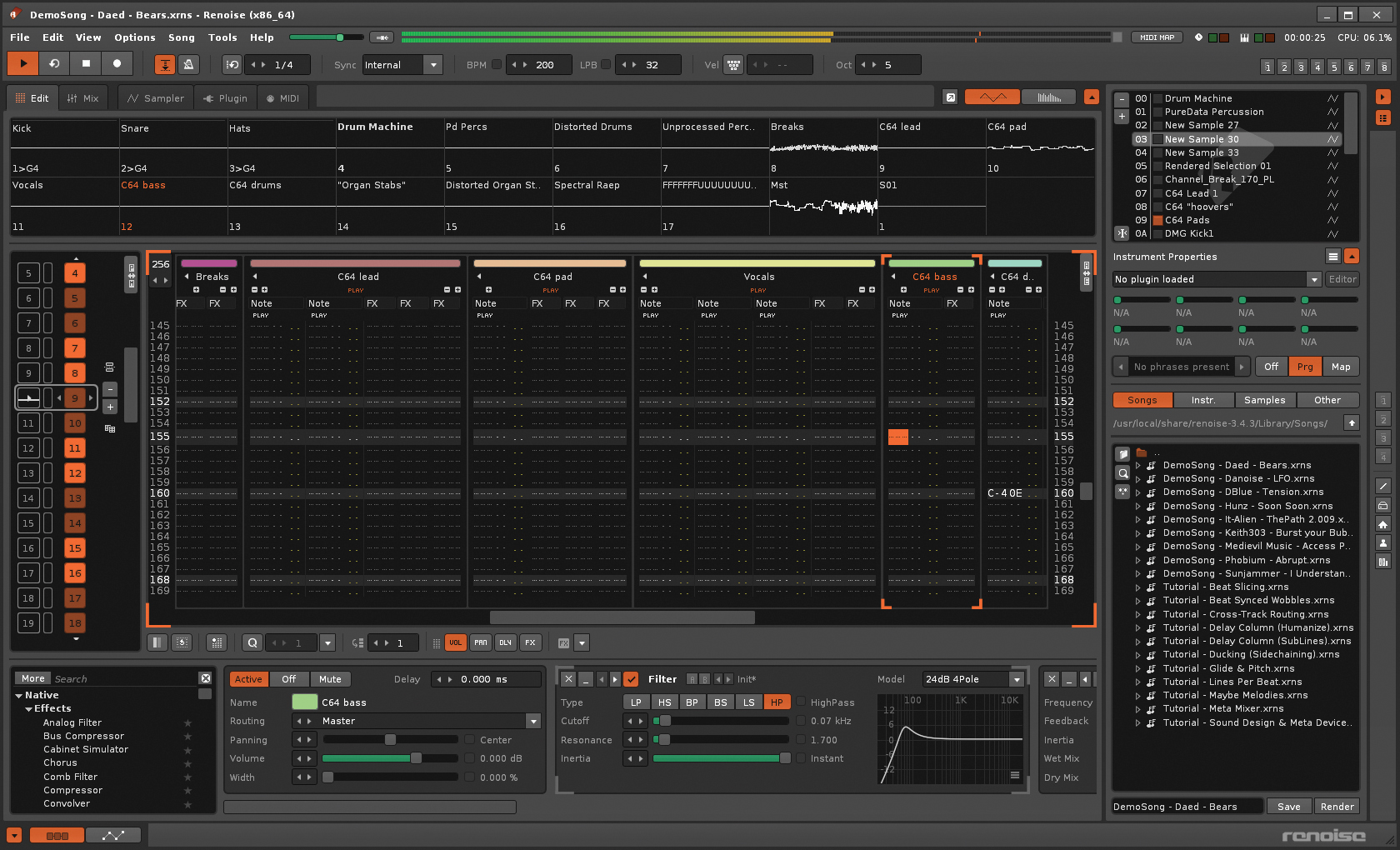
Was your 2023 EP 4#TRAX a sort of testing ground for this album?
“You wouldn’t know it, but the title actually stands for ‘4 Channel Trax’ and absolutely ties into the new album because I made all those songs during the same period of time and all the sounds come from the same sample library and rule set. I decided to call the EP 4#TRAX because I was going through all of these old sessions using a mid-’90s sequencer called Impulse Tracker, which I used until 2010 before making the full switch over to Ableton Live. When I was learning how to use Impulse Tracker, there was a really vibrant community on IRC and I found myself becoming at home with one called Channel Trax on EFnet.”
Was this an online portal where you could share and discuss the tracks you were making?
“Absolutely, but what was so cool about it was that whether people were using Impulse Tracker, FastTracker, ModPlug Tracker or Scream Tracker, everyone was not just sharing their songs but the sessions because file sizes were smaller than MP3s at the time and just having a file size that was 2MB smaller really made a difference when it came to efficiently downloading other people’s music via dial-up.
“On top of the fact that there was a lot of sharing of tracker music on Channel Trax, you could see how other people made their songs and used their samples. I found myself coming across these insane percussion sounds and synth loops that had been reused and passed around a lot from other people’s tracker sessions, and seeing all of that reminded me how important that period was to cutting my teeth in music production.”
Impulse Tracker no longer exists, so what steps did you take to gain access to the samples you wanted?
“They stopped updating Impulse Tracker in 1997, but a friend of mine pointed me towards one of the more accurate DOS emulators called DOSbox and sure enough it was able to run Impulse Tracker. The only other emulator of Impulse Tracker that anybody ever used was called Schism Tracker, which as far as I know is no longer being updated but I was still using it up until my switch over to Ableton Live.
“The problem was that I’d do A/B comparisons on my laptop and could instantly recognise that the way the samples were being processed and played back in Schism Tracker didn’t sound right. That’s why I found it quite important to use DOSbox to go to the original source.”
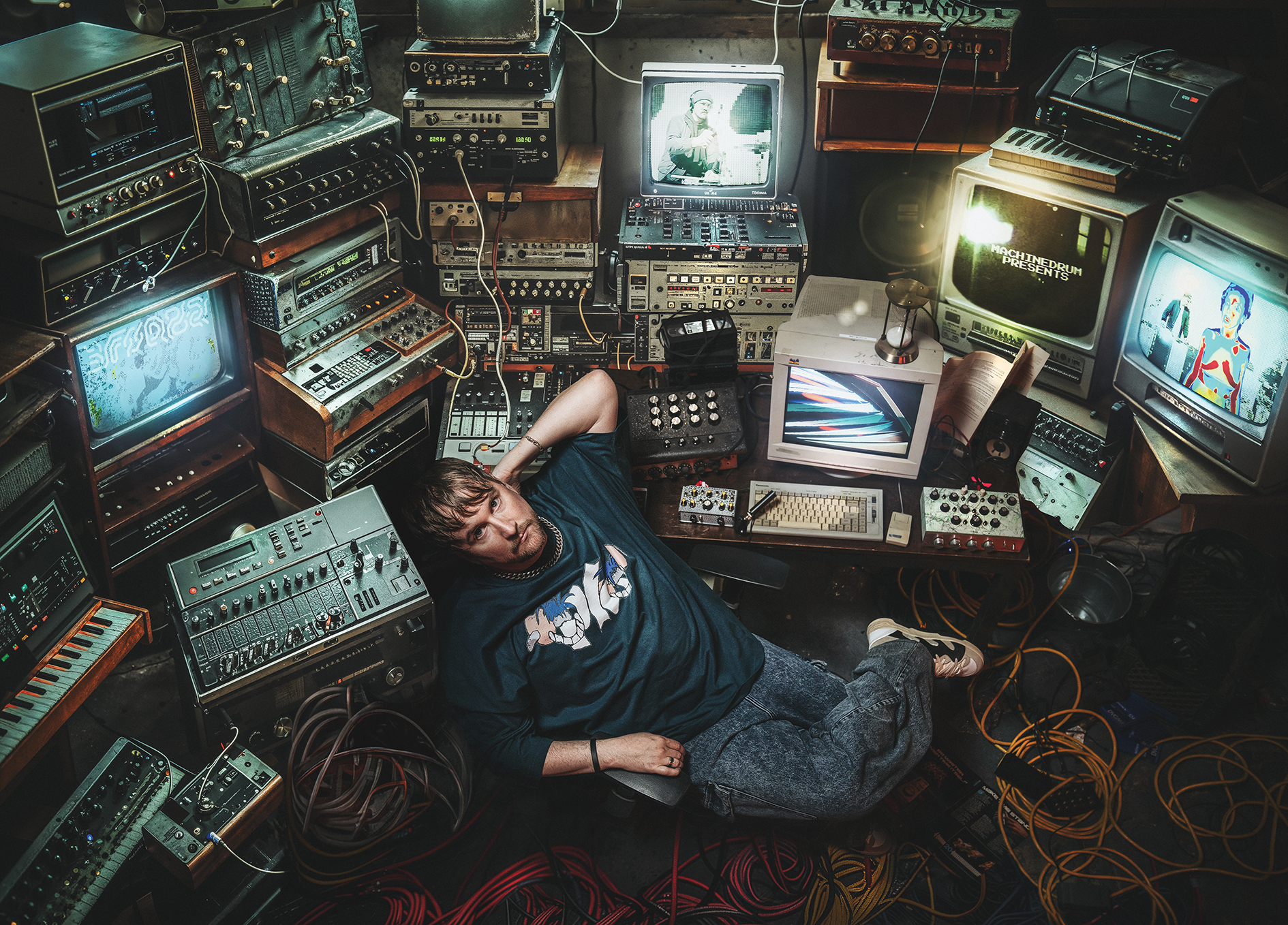
It sounds like a nice idea in principle, but once you had committed to using Impulse Tracker again, were you quickly reminded that it might be more trouble than its worth?
“There were definitely certain points where I realised it would be easier to use Schism Tracker. I was resampling one or two-bar patterns or one shots from Impulse Tracker that I could then solo in Ableton, but for certain songs I wanted all of the stems and only Schism Tracker would allow you to do that. An additional hurdle I gave myself was the rule that if I was to record any new sounds, like guitar, I’d have to resample it back through Impulse Tracker in order for me to create a consistent tonal palette for the album.”
We read that you also used a VHS camcorder to derive some old samples from?
“I came across the exact same VHS camcorder that my family had when I was growing up and decided to bring it out with me to the desert and start documenting the music-making process way more than I had in the past. Basically, the label thought it would be great if I could get some behind-the-scenes footage of the creative process, which I resisted at first because it’s not my reflex to pull out my phone whenever I’m working on music, but having an actual dedicated camera changed that because I suddenly had a device that was there only for that. A lot of the tapes that came with the camera were also from the late ’90s and had been used a billion times over, so I decided to resample some of my sample library through the VHS recorder.”
Once again, there are a lot of vocal collaborators on the record. Is your reason for collaboration as much about escaping the isolation of working alone in the studio and only having yourself to bounce ideas off?
“I wouldn’t say there’s anything about me wanting to escape isolation, given the opportunity I’d probably work by myself forever, it’s more about how I’ve learnt to work over time. From my experience of collaborating with other artists and the amount of knowledge I’ve gained from those sessions, strengthening my skills in that realm has been very exciting.
“When it came to vocal collaborations, I did want to take a new approach to this album related to having more of an intention behind the lyrical connectivity from song to song. In the past, I’ve let vocalists and songwriters write whatever they wanted and didn’t really care much about whether it would all fit together somehow, but on the last album Ninja Tune asked me if I’d thought about how the lyrics connect and the story I was trying to tell. I was kind of stunned in that moment, so the idea of creating a through line or storyline definitely stuck with me from that point onwards.”
How did you go about finding the various vocal collaborators that feature on 3FOR82?
“It was a mix. At first, I tried to manifest certain collaborators by making acapellas from artists that I’ve wanted to work with using various track separation tools and building tracks around those vocals. None of those came to fruition, but the process at least helped me to create a song that had a pocket for a vocalist. I was super open to whatever opportunities arose, but I’d already frequently collaborated with people like Tanerélle, Deniro Farrar and Jesse Boykins III and knew we could make something amazing together because we already had that trust.”
I’m such a huge fan of all different genres of music that I can’t help but explore those threads whenever I feel inspired
U_Want (feat. Kucka) must be one of your more commercial, poppy efforts. Did you find freedom in making this rather untypical Machinedrum track?
“The songs from the EP and the track U_Want on the album were written with Kucka in person. She’s a very seasoned music producer in her own right, one of the early collaborators on the album and one of the few I worked with together, whereas a lot of the other collaborators came on board after I’d already had a batch of tracks made.
“I’ve always loved Kucka’s pop sensibilities, but also her strength in doing things out of the ordinary. Her voice is so unique and not something you’d normally hear in a pop track, so I had that awareness of her pop sensibility combined with her ability to do something unexpected, which was exciting for both of us.”
It’s interesting that you were happy to put Kucka’s poppy vocal style right next to the hip-hop rap of Bleed with Deem Spencer or even combine various vocal styles on tracks like Ilikeu with Duckworth?
“I’m such a huge fan of all different genres of music that I can’t help but explore those threads whenever I feel inspired. Sticking to the frameworks that I mentioned having in place allowed me to play around in different genre spaces and work with rappers, R&B and pop singers.
“I also sat down with my camcorder before every session and posed the question, if you had the chance to sit down with yourself when you were younger, what words of advice would you give yourself? That would often lead into what we’d write the song about and I actually ended up sprinkling short snippets of things I thought were interesting from what they said in those filmed responses throughout the music.”
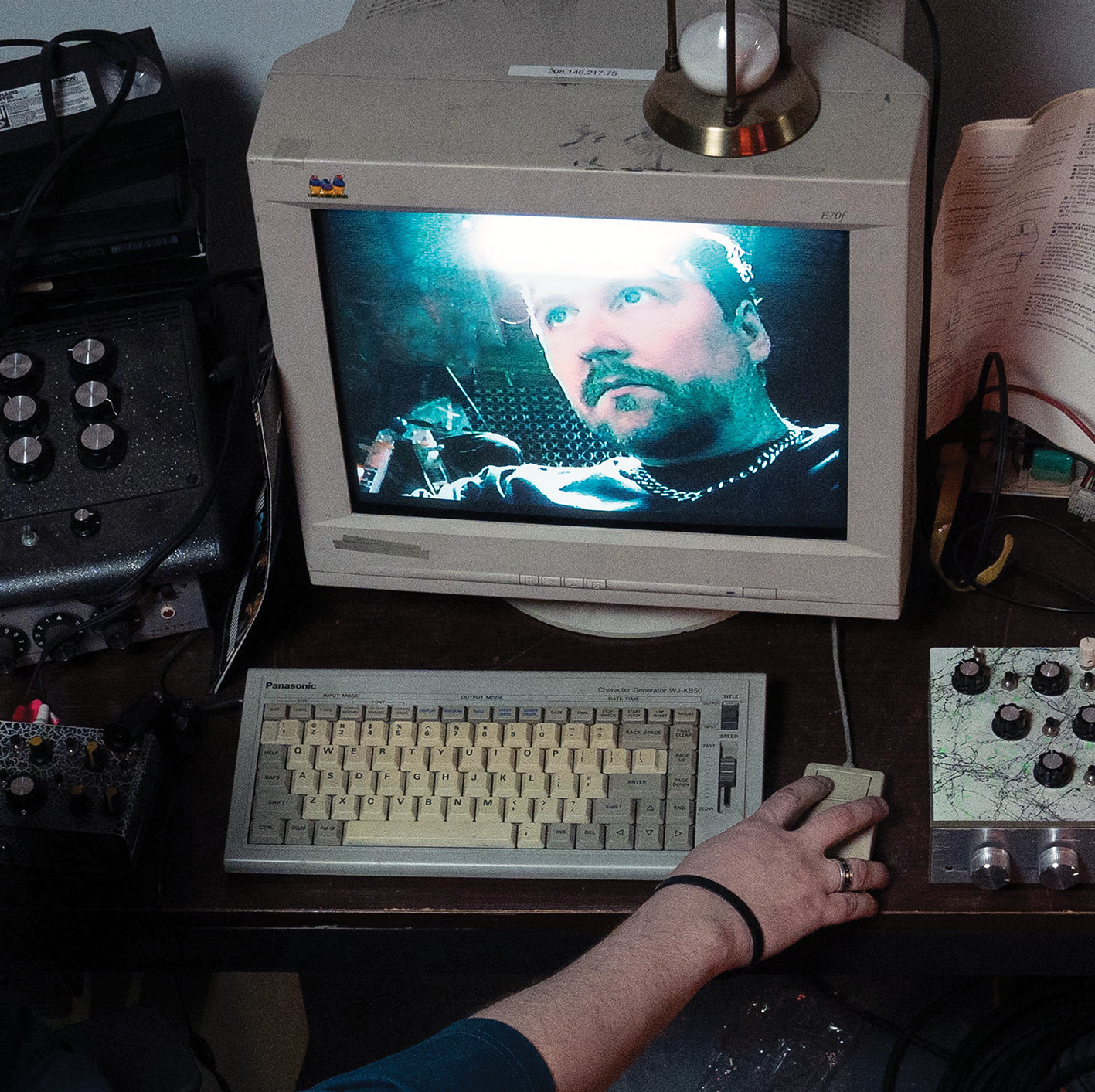
Did you find yourself doing a lot of vocal manipulation once you’d received a remote contribution?
“Not necessarily. All the vocals were recorded to the original tempos and beats so I didn’t end up reusing vocals for a different song or changing the productions fundamentally after getting a vocal. What definitely helped with connectivity was having a vocal template or chain that I used across all of the songs. Obviously, I’d tweak those parameters depending on the vocalist, so some songs would be more effects-heavy than others, but having that chain across the songs allowed that connectivity to be in place.”
As you started getting deeper into the production process, did you use anything else for sequencing or recording?
“Not really, everything was done in-the-box in Ableton. Having said that, a huge part of my upbringing when it came to electronic music production and an early interest in hip-hop was sampling. It’s something that I’d intentionally started to escape on albums like Human Energy, but it’s so ingrained in my DNA that I can’t seem to fully escape it, so one of the additional rules I came up with was that if I was to sample anything it would have to be from my birth year, 1982.
“With that in mind, I ended up going to Tracklib.com and filtering all of their sample libraries through 1982 and kept finding incredible stuff, from West African afro-funk to Bob James, various psychedelic rock stuff and Italian film score-type things. I wondered whether to process them through Impulse Tracker or use them at a different level, but although AI track separation tools are starting to become a dime a dozen, few are really strong.”
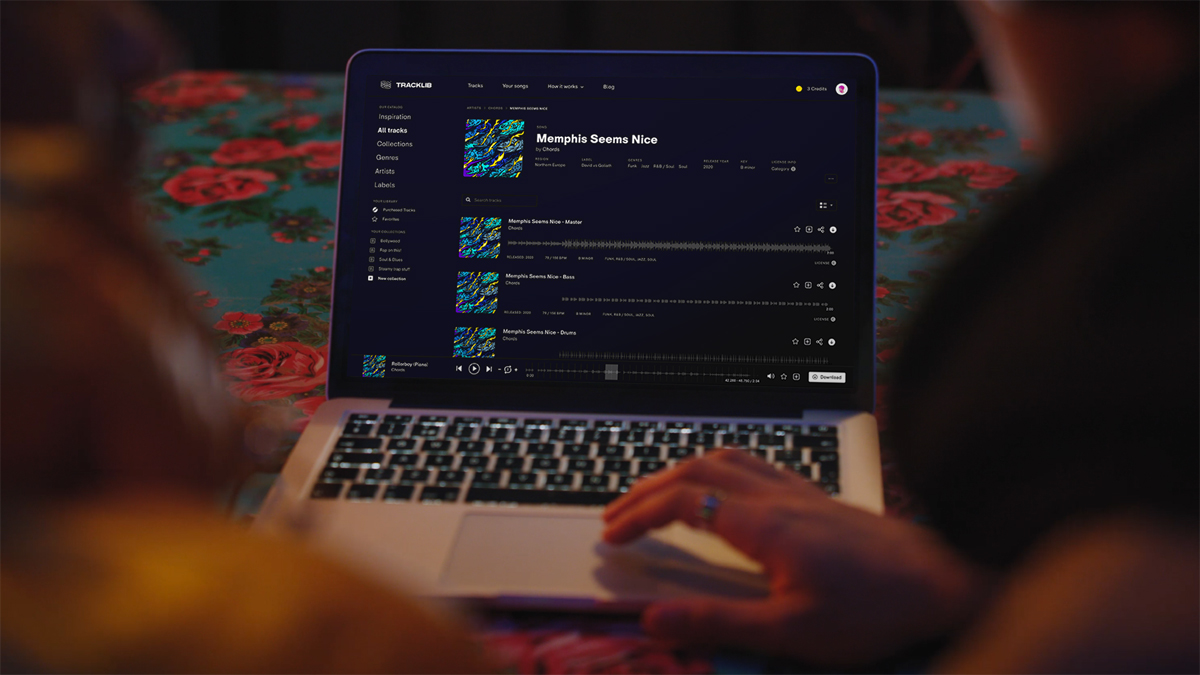
Tracklib makes it easy to buy songs and then sample them legally
Which ones did you turn to and how were they employed?
“LALAL.AI has its own separate plugin that does track separation and I found that to be my go-to for quality, especially on vocals, but there’s also RipX, whose intention is to try and make a track separation tool that also works as a DAW. I think the sound extraction process is a bit more tedious with RipX, but the quality ended up being so good that it paid off. If I heard, for example, a beautiful string line from an Italian film score and just wanted those strings, I’d use tools like that to extract it.”
That’s a positive use for an AI tool, but do you have concerns about how AI might be implemented in music more generally?
“I’m not sure if I can add anything that’s not already been said, but the biggest threat right now is for people who write a lot of bespoke music for commercials or movies. When I get publishing offers, they’re essentially sending me prompts – we need an upbeat drum and bass song with lyrics about saving the world etc.
As the quality of these AI sites start to get better, they’re definitely not going to want to pay artists £20-50,000 to make bespoke tracks when they can do it for free
“As the quality of these AI sites start to get better, they’re definitely not going to want to pay artists £20-50,000 to make bespoke tracks when they can do it for free. I do find it a bit concerning, but who’s going to be excited by a Drake and Kendrick AI rap beef? There’s something so specifically human about that which can’t be replaced.”
There’s an AI recreation of a Depeche Mode song floating about that’s uncannily convincing, but is it really any different from a remix?
“It makes me think of all my fans that are hung up on a certain period of time of my music. Maybe now I can just point them to the best AI and have it make the same album they want me to keep making over and over again. That aspect is also somewhat concerning, but it alleviates me of the feeling that I have to keep repeating myself, while I’m free to explore new sounds that an AI couldn’t necessarily recreate because it’s not out there yet.
“More importantly, we need to start putting some regulations in place to pay royalties to artists who end up having their works used by data-trained AI websites or plugins so they can get compensated for that.”
Machinedrum's 3FOR82 is out now on Ninja Tune.
